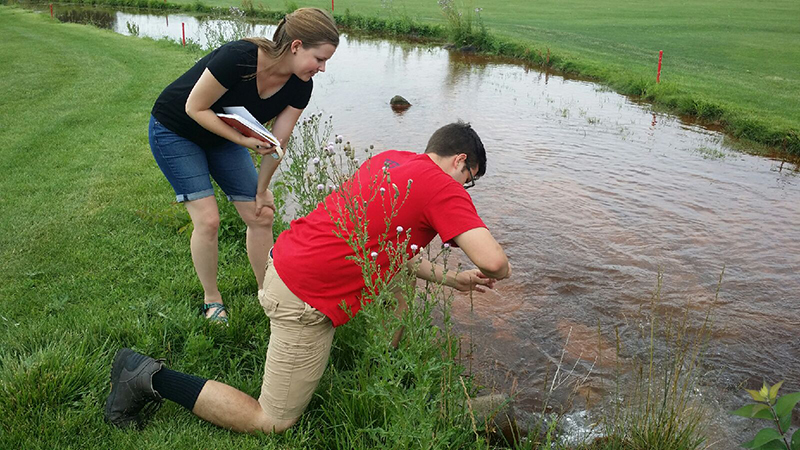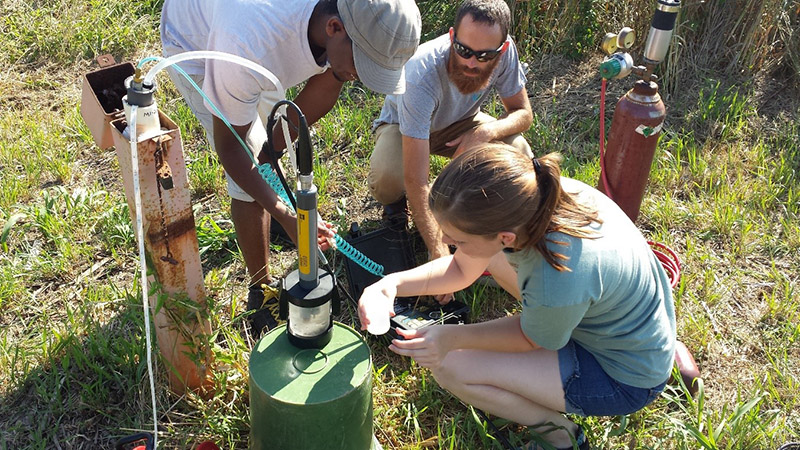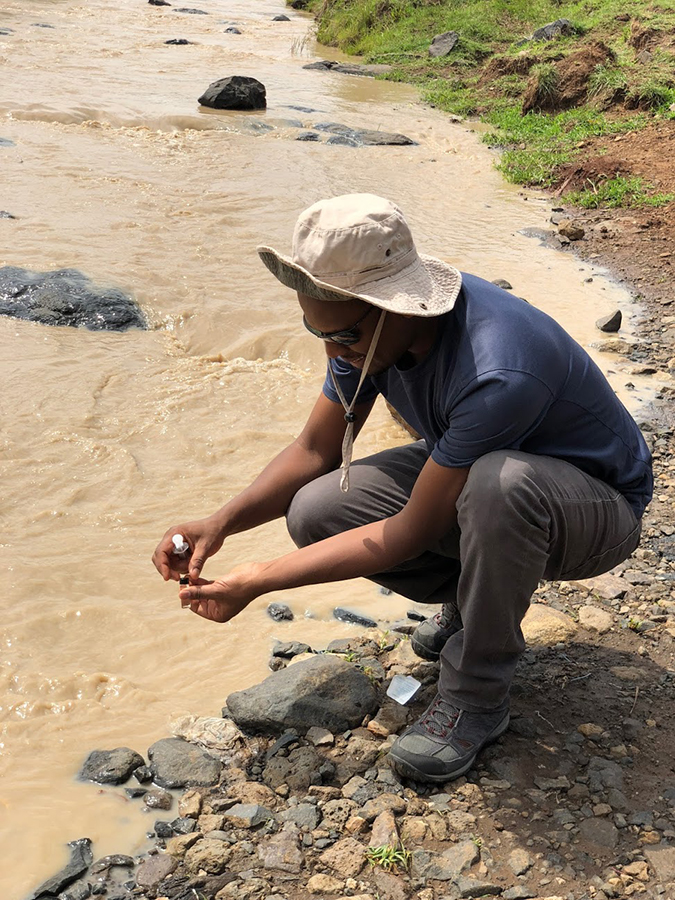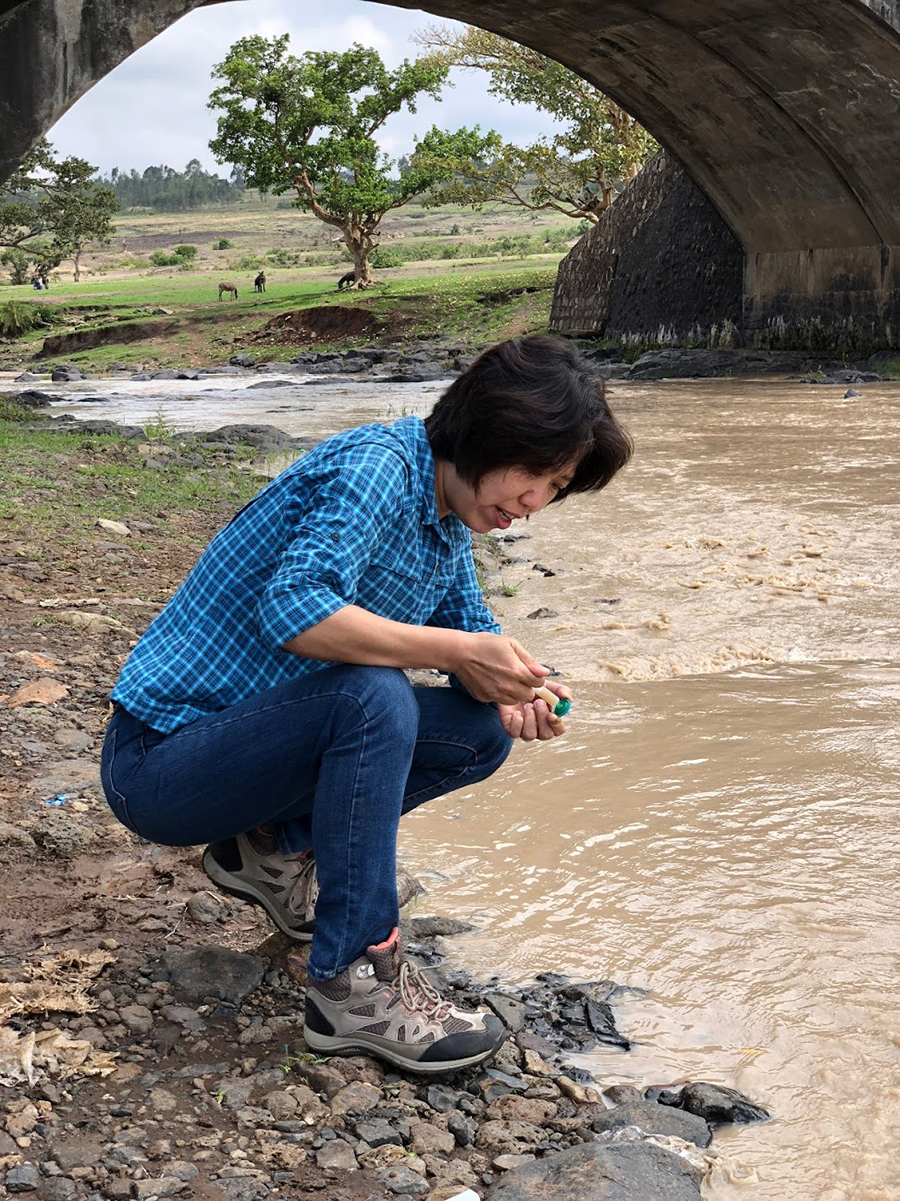College of Arts and Sciences Newsroom
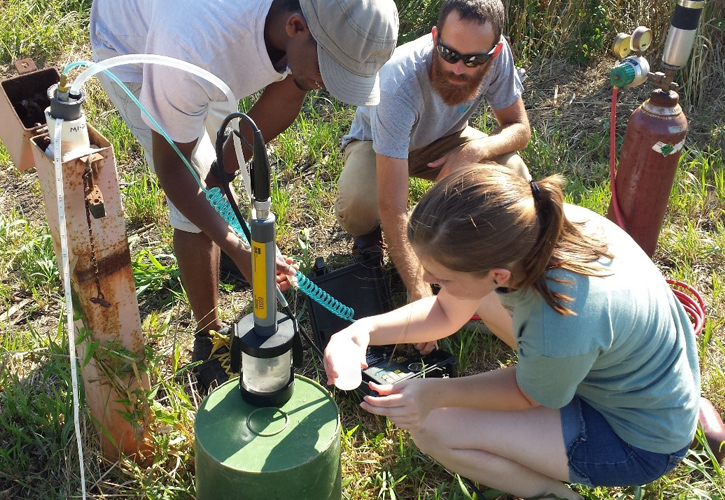
Dayton Groundwater Sustainability
The Dayton region is expected to see increased precipitation in the coming decades, based on climate model projections, which is likely to help recharge the aquifer that is the principal source of water for about 2.3 million people in southwest Ohio, according to a new paper published by two University of Dayton Department of Geology researchers.
Sustaining groundwater resources through the end of the century in the face of climate change is good news for the region, which promotes its abundant water resource for economic development, education and recreation, said Zelalem Bedaso, an assistant professor and geochemist who co-authored the paper.
“There is a predicted global decline in the amount of groundwater in the future,” he said. “Compared to that, having a consistently good aquifer in Dayton is an extreme blessing.”
The paper, Assessing groundwater sustainability under changing climate using isotopic tracers and climate modeling, southwest Ohio, USA, was published in May in the Hydrological Science Journal. It was co-written with climatologist Shuang-Ye Wu, associate professor and incoming Department of Geology chair, and recent graduates Amber N. Johnson and Colin McTighe.
To understand the future sustainability of the region’s groundwater, the researchers looked at how much groundwater is replenished during the summer versus winter months. They also looked at climate models to determine how the region’s precipitation will change in the future. Using the combined data, they predicted how groundwater will be affected as the region’s climate changes.
“Our region has an open aquifer,” Wu said. “That means most of the groundwater is recharged by precipitation. Many factors affect how much precipitation gets into the groundwater, including how much becomes runoff, how much is evaporated and how much is intercepted by plants. What remains will gradually seep into the groundwater.”
During a two-year period, the researchers collected 135 samples, including groundwater samples from the Great Miami River watershed and daily precipitation samples from a water sampling station on the roof of the University’s Raymond L. Fitz Hall. Using chemical signatures of water as a tracer, they measured seasonal groundwater recharge and determined that about three-quarters of the region’s groundwater comes from winter precipitation, with the remaining amount coming from warm season precipitation.
Based on climate model projections, precipitation in the region is expected to increase in the cool season and decrease in the warm season through the end of the century. These changes are expected to increase the region’s seasonal groundwater recharge amount by 3.2 percent under medium climate change and 8.8 percent under high climate change scenarios.
The study looks at precipitation change, but doesn’t account for other factors such as evaporation, which is likely to increase with rising temperatures, or the type of precipitation the region will receive as temperatures increase. Wu and Bedaso plan to look at the potential impacts of these factors in future studies.
“One of the reasons we think winter recharge is important is because a large part of winter precipitation falls as snow, which melts slowly and then seeps into groundwater,” Wu said. “But, if most of what we get during winter is rain — particularly if it’s heavy rain — then it quickly turns into runoff and gets into the rivers instead of the aquifer.”
During the last two winters, the region saw several days with sharp temperature increases, which resulted in sudden snowmelt. Because the ground was still frozen, that water couldn’t seep into the ground. Instead, it resulted in flooding.
A 2010 study by Wu, published in the Hydrological Science Journal, found that the 100-year flood risk for the Dayton region will increase 10 to 20 percent through the end of the century, according to climate change model simulations.
“The risk of flooding is actually going to increase quite a bit, and the increase of precipitation is disproportionately larger for heavy precipitation,” she said.
Bedaso and Wu have other research projects in East Africa and China, respectively. They have increased focus on projects that serve the Dayton-area community in response to University President Eric F. Spina’s call to become the “university for the common good.”
“I think we should give back and try to solve some of the local problems,” Bedaso said. “This is not really a problem, but understanding our water resource is important for the local economy, decision-making, public policy and so forth.”
Their Dayton groundwater study was supported by a grant from the University of Dayton Hanley Sustainability Institute. The institute was established in 2014 with a $12.5 million gift from the foundation of George Hanley '77 and Amanda Hanley, the single-largest in University history. The Hanleys challenged the University to become a national leader for innovation in sustainability.
“The Hanley Sustainability Institute is proud to have supported this important work by Professors Bedaso and Wu,” said Ben McCall, the institute’s executive director. “This is a great example of faculty members with different expertise coming together and working with students to better understand a sustainability challenge in our community.”
- Dave Larsen, communication coordinator, College of Arts and Sciences

